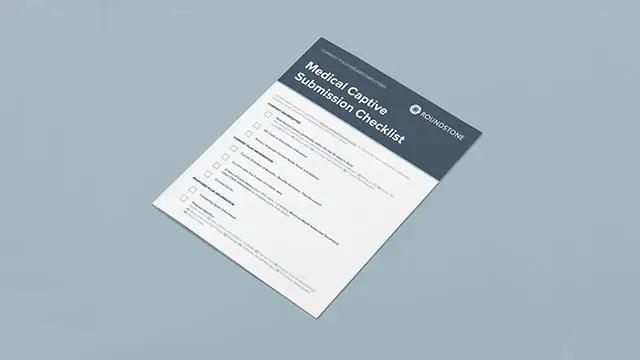Many of you recently received double-digit rate increases from your employee benefits carriers. Now you are adjusting your 2020 strategy to absorb the financial hit. Those are some tough decisions. Have you considered all of your options?
We asked for advice from expert CEO-advisor, Jim Schleckser, from Inc. CEO Project. When managing your business on a restricted budget, Schleckser recommends that you “reduce spending in non-critical areas so you can invest more heavily in things that will generate revenue and profit.” The second idea he shared is to “Never waste a good crisis. It is a great chance to challenge your old ideas.”
From Jim Schleckser, here are 9 opportunities to optimize business spend:
1. Refine your Value Proposition
Customers buy from you for a reason. Make sure you know what that reason is and hone the offering until it is a weapon for creating new business. Your value proposition should serve as an active reminder of what your customers want and what problem you can solve for them. “Try to find your mafia offer and make it so good potential clients can’t say no,” says Schleckser.
What do your customers want? Consider these areas for innovation:
– Customer Experience
– Innovative product offering
– Lowest cost solution
– Ease of doing business
What problem can you solve for your customer? How do you deliver greater value than your competitors? Articulate it. Make sure your team and branding/marketing is saying it consistently.
2. Promote Best Practices
Do your sales, marketing, and product/service teams use best practice processes? Schleckser recommends that businesses “create strong systems and processes to enable less experienced people to deliver high quality, economical results, repeatedly.”
3. Reassess Legacy Processes
Has your business accumulated a set of manual activities that used to be much more useful than they are now? Reassess processes regularly and weed out inefficiency. “Really,” says Schleckser, “do you need that 39-page turnover report? If not, the employee producing that report can deliver greater value doing something else.
4. Focus on Motivators that Matter
Not everyone is motivated by money. In his book, Drive, Dan Pink suggests we consider Intrinsic motivators like autonomy, mastery, and purpose.
– Autonomy: the desire to direct our own lives
– Mastery: the urge to get better and better at something that matters
– Purpose: the yearning to do what we do in the service of something larger than ourselves
5. Reward Your Employees
You’ll be asking people to do more for less and potentially with fewer people in the organization. The ones that are still around need compensation and recognition. Recognize employees who demonstrate company values with achievement awards and small spot bonuses. Never underestimate the power of a thank you note from the CEO.
6. Delegate to Develop Talent and Leverage Time
If you don’t learn to embrace the art of delegation, you won’t be able to build your business. The 70 percent rule gives you guidance on how to do it well. Taking the time to delegate out work frees you up for higher value tasks and helps develop talent. “Develop high performers.” Schleckser says. “They are the key to growth. Delegate to them!”
7. Reduce the Cost to Create/Deliver your Product
By reducing the cost to produce each unit, you set up a lasting benefit that pays a dividend every time you produce that product in the future. When seeking opportunities to reduce the cost per unit, consider:
– Overhead costs through smarter purchasing
– Materials used to create your product: parts and pieces
– Supplier alternatives
– Bulk purchase savings
– Reduced labor hours per unit. “Ask for your employees’ input — they know what you don’t.”
8. Optimize Balance Sheet Items
There are a number of ways to reduce expense just by managing your balance sheet. Here are a few:
– Collect Accounts Receivable aggressively
– Negotiate longer payment terms for purchases
– Carry less inventory
– Look for creative methods of financing
– Reduce operating expenses by managing sales, general, and administrative expenses
9. Make Employee Health Benefits a Long-term Strategic Investment
Employer health plan costs are continuing to rise, easily outpacing inflation and challenging businesses’ bottom lines. Mid-market companies can feel powerless when tasked with fighting spiraling healthcare costs, but a solution may be as simple as rethinking how you insure employees.
Buying health insurance should not be a rash decision made each year but rather a well-thought-out strategic plan.
Maintaining affordable rates over the long run is often not a reality unless the funding strategy provides long-term ways to save.
Consider a group, self-funded insurance plan as an option to manage your expenses.
No business wants to make unnecessary cuts or compromises. And there’s a big opportunity to avoid this right at the top of your P&L by reducing your health benefit spend (reducing healthcare costs).
Health benefit spend is a top line item expense for most businesses. As a mid-sized employer ourselves, Roundstone understands how health care costs can burden your business. For more than a decade, we’ve delivered affordable health insurance benefits that save our clients an average of 20%.
If you’re ready to get off the merry-go-round of annual rate increases, contact us today.
Thanks to Jim Schleckser and Inc. CEO Project for the great advice for optimizing business spending. For more insights from expert CEO advisors, check out the Inc CEO Project blog.









